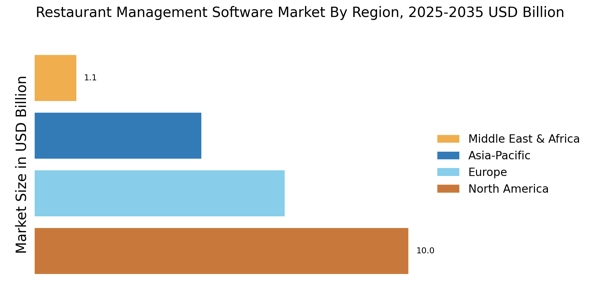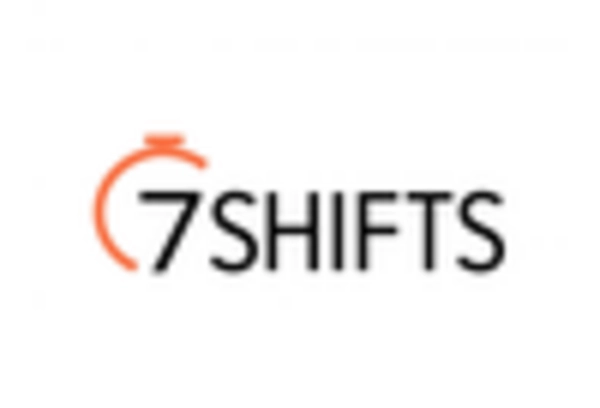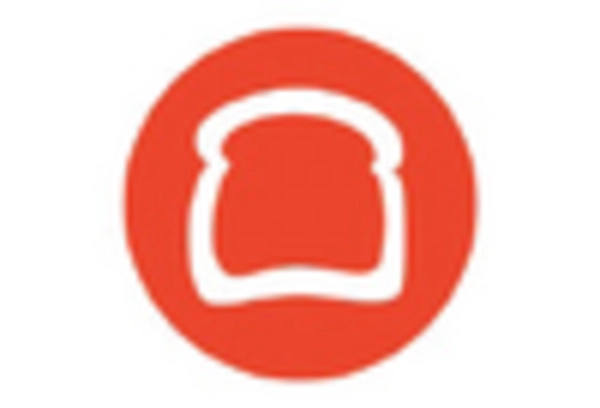Rising Demand for Automation
The Restaurant Management Software Market experiences a notable surge in demand for automation solutions. As restaurants strive to enhance operational efficiency, automation tools are increasingly adopted to streamline processes such as order management, inventory control, and staff scheduling. This trend is underscored by a report indicating that automation can reduce labor costs by up to 30%, thereby allowing restaurants to allocate resources more effectively. Furthermore, the integration of automated systems minimizes human error, which can lead to improved customer satisfaction. Consequently, the growing inclination towards automation is likely to propel the Restaurant Management Software Market forward, as establishments seek to remain competitive in a rapidly evolving landscape.
Shift Towards Mobile Solutions
The Restaurant Management Software Market is witnessing a significant shift towards mobile solutions. With the proliferation of smartphones and tablets, restaurants are increasingly adopting mobile applications for various functions, including order taking, payment processing, and customer engagement. This trend is supported by data indicating that mobile ordering can increase sales by up to 20%. Additionally, mobile solutions enhance the customer experience by providing convenience and accessibility. As consumers continue to favor mobile interactions, the demand for mobile-compatible restaurant management software is likely to grow, driving innovation and competition within the market.
Increasing Focus on Data Analytics
Data analytics has emerged as a pivotal driver within the Restaurant Management Software Market. Restaurants are increasingly leveraging data to gain insights into customer preferences, operational performance, and market trends. By utilizing analytics tools, establishments can make informed decisions that enhance menu offerings and optimize pricing strategies. Reports suggest that restaurants employing data-driven strategies can experience revenue growth of up to 15%. This emphasis on data analytics not only aids in improving customer experience but also fosters a culture of continuous improvement. As a result, the demand for sophisticated analytics capabilities within restaurant management software is expected to rise, further shaping the market landscape.
Emphasis on Sustainability Practices
Sustainability has become a crucial consideration within the Restaurant Management Software Market. As consumers become more environmentally conscious, restaurants are adopting sustainable practices that align with customer values. This includes sourcing local ingredients, reducing food waste, and implementing eco-friendly packaging. Software solutions that facilitate these practices, such as inventory management systems that track waste, are increasingly sought after. Reports indicate that restaurants prioritizing sustainability can enhance their brand image and attract a loyal customer base. Consequently, the integration of sustainability features into restaurant management software is likely to become a key differentiator in the market.
Growth of Online Ordering and Delivery Services
The Restaurant Management Software Market is significantly influenced by the growth of online ordering and delivery services. As consumer preferences shift towards convenience, restaurants are increasingly adopting software solutions that support online ordering platforms. Data shows that online orders can account for up to 30% of total sales for many establishments. This trend has prompted restaurants to invest in integrated management systems that streamline order processing and delivery logistics. As the demand for online dining experiences continues to rise, the Restaurant Management Software Market is expected to expand, driven by the need for efficient and user-friendly solutions.


















Leave a Comment